Fendt tractors: Common problems and how to fix them
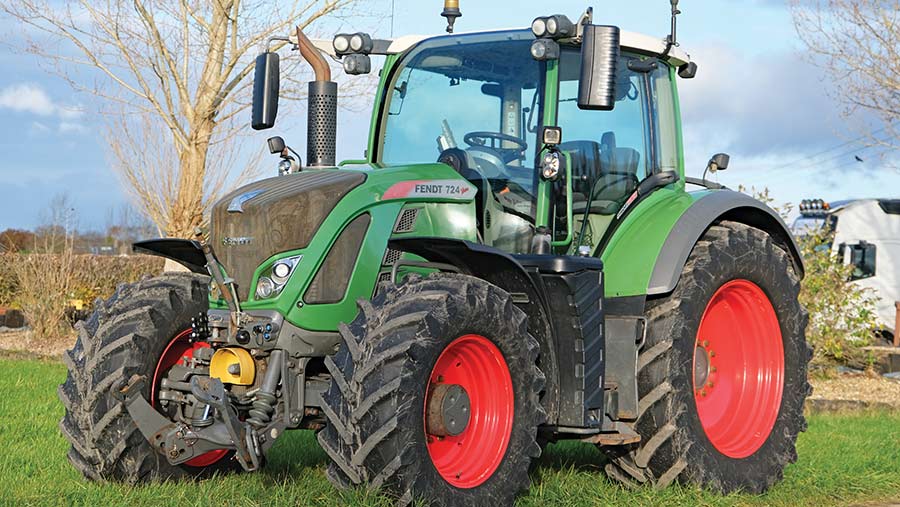 © James Andrews
© James Andrews It might be the premium brand of choice for large-scale farms and contracting businesses, but just like any other maker, Fendt’s tractors can suffer the odd mechanical gremlin.
Engine problems with 828s and failing Vario transmissions on the 700 series are some of the headline faults.
But there are several other frailties to watch out for when running a Marktoberdorf-built tractor or shopping for a second-hand one.
See also: Massey Ferguson tractors: Common problems and how to fix them
Here we take a look at the main problems affecting popular 500, 700, 800 and 900 series models built over the past decade.
Helping us through the process are Richard Pykett, John Saxton and Sam Vincent of Derbyshire dealer Pykett Tractors, who together have more than 60 years’ experience with the brand.

From left: John Saxton, Richard Pykett and Sam Vincent © James Andrews
6.1-litre engine problems – 800 series
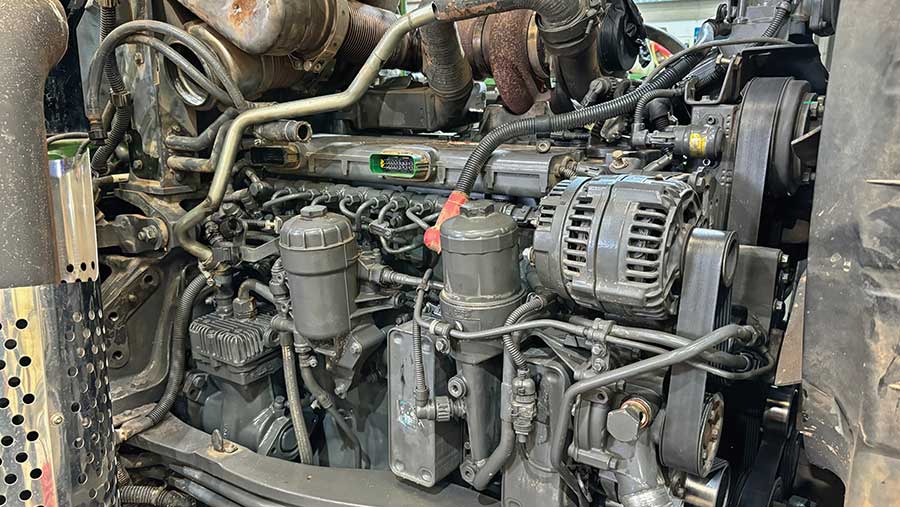
© James Andrews
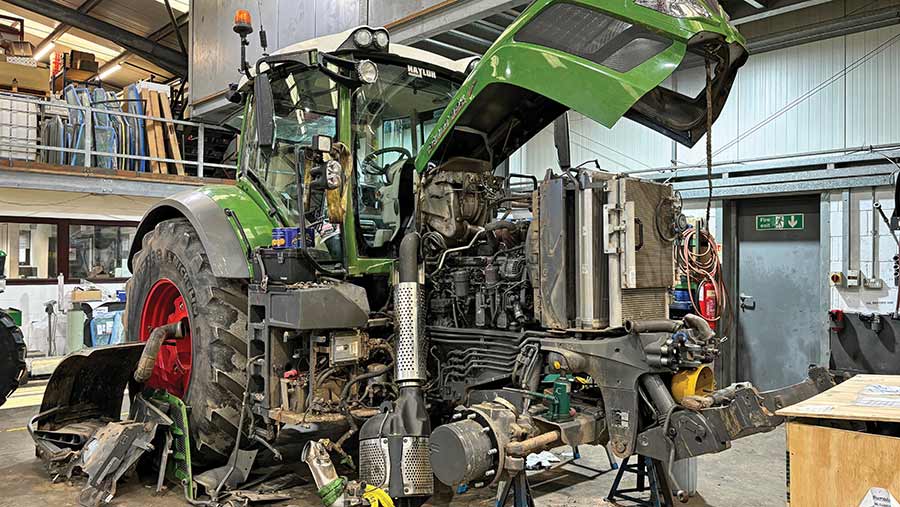
An 828 in Pykett’s workshop © James Andrews
It’s no secret that 800 series tractors – most of which are 828s – can suffer serious engine problems that require an entirely new block to be fitted.
The first signs of trouble are that the engine will begin burning oil. This often gets progressively worse to the point that it can be using a couple of litres or more a day.
Early AdBlue-only “SCR” models built up until 2014 aren’t generally affected, as the main culprit is the EGR system and its related pipework, which came in after this point.
This can cause wear in the bores that results in the oil use.
The system has been modified on later models, so there should be a lower risk for those who have bought a new tractor recently.
When owners alert their dealer to the problem, they’re asked to fill in a log of how much oil the engine is burning relative to fuel use, and if it hits a certain limit the recommendation is to fit a new long-block assembly.
Fendt will obviously cover the cost of this for any tractor under warranty and, according to Pykett Tractors, no customers have been left high and dry, providing they’ve got a complete service history.
For anyone who does need to foot the bill, it could run to £25,000 or more for a complete engine, with a long-block assembly coming in at £16,000.
If buying a second-hand tractor, it’s hard to get a handle on oil use unless the seller is particularly forthcoming. But another way to detect engine trouble is to open the oil filler and feel for a blast of air coming out.
Although 700 series machines have the same engine, they have a single- rather than twin-turbo setup and different ancillaries, which means they aren’t affected in the same way.
However, the odd one has had to have a new engine.
One important maintenance measure on these engines is to check and adjust the tappets every 2,000 hours to prevent premature wear.
Injector leaks – 700 series
Copper inserts around the injectors on 700 series tractors can leak and cause pressure to build up in the fuel and water systems.
On the water side, operators will see a low coolant level when running, which returns to normal when the engine is turned off.
The pressure build-up in the fuel side can rise to such an extent that the tank cap can fly into the air when removed.
Fitting replacement seals should solve the problem, costing £1,200 for a set and taking about 15 hours to fit.
7.1-litre engine problems – 900 series
Larger 900-series tractors fitted with a 7.1-litre Deutz block have also had a bit of emissions-related trouble.
This came about when the S4 versions were introduced in 2015 with a DPF and EGR system.
Putting dirty exhaust gases back through the engine caused carbon to build up at the top of the cylinders, which eventually led to increased oil consumption and engine breathing.
Fendt came up with a fix that involved fitting serrated liners which prevent carbon build up. Most tractors will have had this update, so it shouldn’t be a cause for concern when buying a second-hand model.
Vario transmission failure – 700 series
Another well-documented Fendt ailment is failure of the ML180 Vario transmission fitted in 700-series tractors.
Those that are well maintained and driven considerately can give trouble-free service for 15,000 hours or more. But those that are abused, badly maintained or just plain unlucky can fail prematurely.
The main way operators reduce the lifespan of the transmission is by lifting off the throttle at high speeds or carrying out heavy fieldwork in range two.
Inconsiderate driving like this can lead to failure of the main bearing in the back of the housing, scoring of the pump bores or even pistons being forced out of the pump.
Before buying a tractor, listen out for any rattles during driving and pull up the dipstick and sniff the oil. If it smells burnt or the transmission is making noise, it’s almost certainly on its last legs.
However, it is worth noting that rattling can sometimes be caused by wear in the gearbox input shaft, which can be replaced for a far lower outlay.
To have a reconditioned Vario cartridge fitted by a Fendt dealer costs about £14,000, but for those who have the skills, equipment and time to do it themselves, an exchange unit can be picked up for about £10,500.
As for the four-cylinder 500 series tractors, these are fitted with a lighter ML90 version of the transmission, which rarely goes wrong, partly as the tractors aren’t pushed as hard.
The heavier-duty ML260 units used in the 800 and 900 series are also tough and don’t tend to play up.
Viscous fan bearings – most models
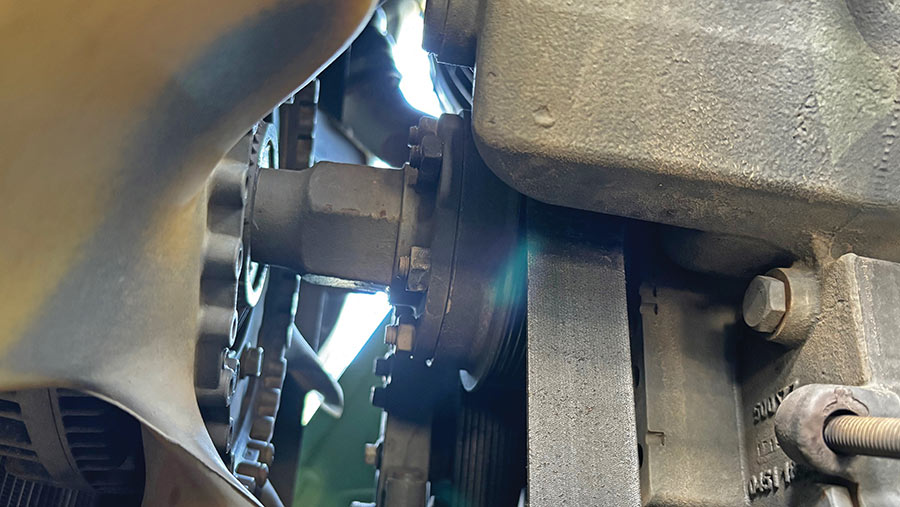
© James Andrews
Most Fendt tractors are prone to fan bearing failure and, if ignored, the blades will eventually detach, possibly skewering the radiator or whacking into the side of the bonnet in the process.
They can last for 5,000 hours, but it’s worth assessing wear every 1,000 or so, which is simple to do by grabbing the blades and checking for play.
Genuine replacements cost £250 plus fitting, with non-genuine ones starting at about £100.
Cab bushes – 700 and 800 series
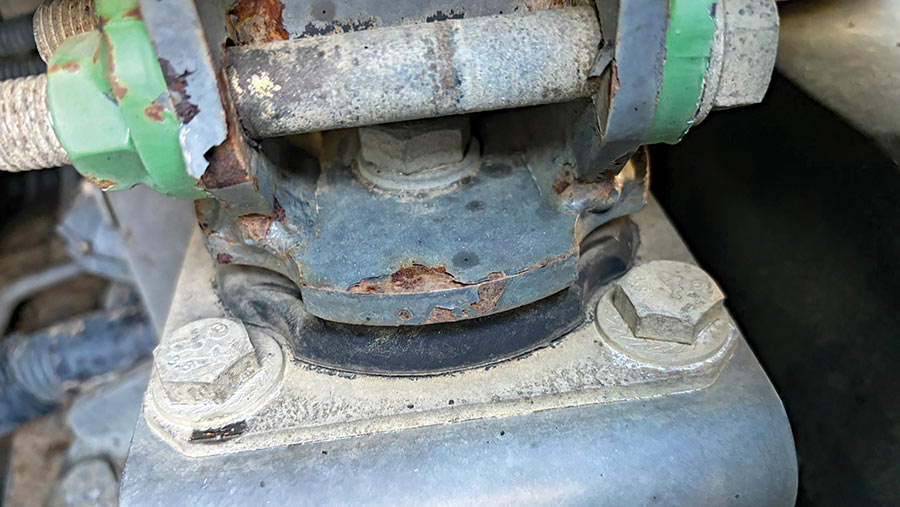
© James Andrews
Bumping down rough roads and tracks at full chat will eventually trash cab suspension rubber bushes.
As 700 and 800 series tractors do the most road work, these are the models that tend to be affected more frequently.
Drivers will soon know if they’ve given up the ghost as the cab will clatter and bang as it moves around on its mountings.
On 700 series machines there’s either a two-point suspension system or a more sophisticated three-point setup.
Both have two bushes to replace, with the former coming in at £180 apiece and the latter £60 each.
Bigger 800-series cabs have a slightly different take on the three-point setup, but they still have two front bushes that cost £70 each.
Track rod ends and centre axle bushes – 700 and 800 series
Another consequence of rough roads and high speeds is that track rod ends on the 700 and 800 series are getting trashed faster than would normally be expected.
To check for play, jack the front of the tractor off the ground and wobble the wheels from side to side. Replacements are fairly simple to fit and cost about £460 for a 700 series.
Worn centre axle bushes are another one to watch out for on tractors that do a lot of road work.
Shattering windscreens – 700 series
The large windscreen that nips into the roofline on 700 series tractors might give great forward visibility, but it’s also notoriously prone to shattering.
Stone chips are fair enough, but they’ve also been known to self-destruct when shutting the door, or just when cruising along with no form of impact.
Fendt is aware of the issue and has introduced a thicker version, but this isn’t immune to the problem either. Replacements are about £1,000, plus the cost of having them fitted.
Often, the shattering glass will scratch the bonnet too, which could result in a respray being required.
Leaking ZSB pipe – 700 series
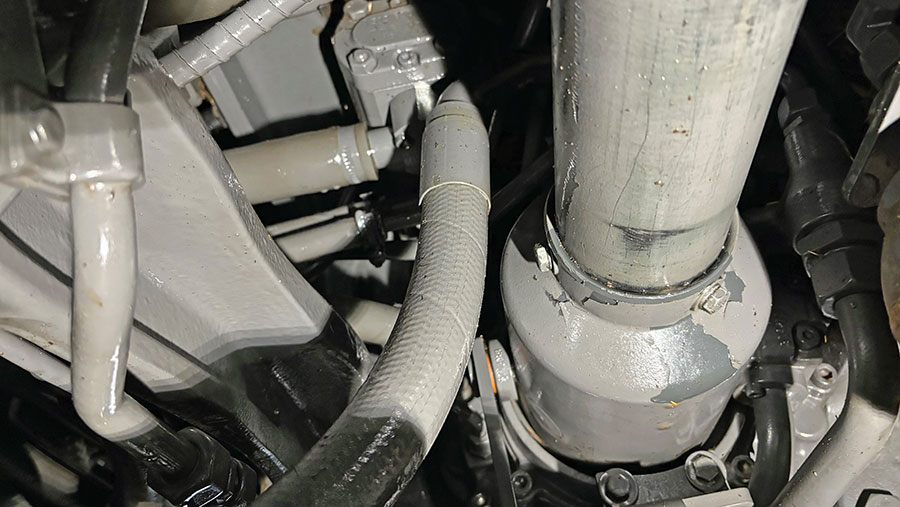
© James Andrews
If there’s an oil leak under the cab of a 700 series tractor, it’s likely that the main pipe feeding oil from the hydraulic pump to the ZSB distribution valve is leaking from the swaged end connectors.
Once these have gone, replacement is the only option, with the complete pipe coming in at about £275.
Poor paint quality – all models
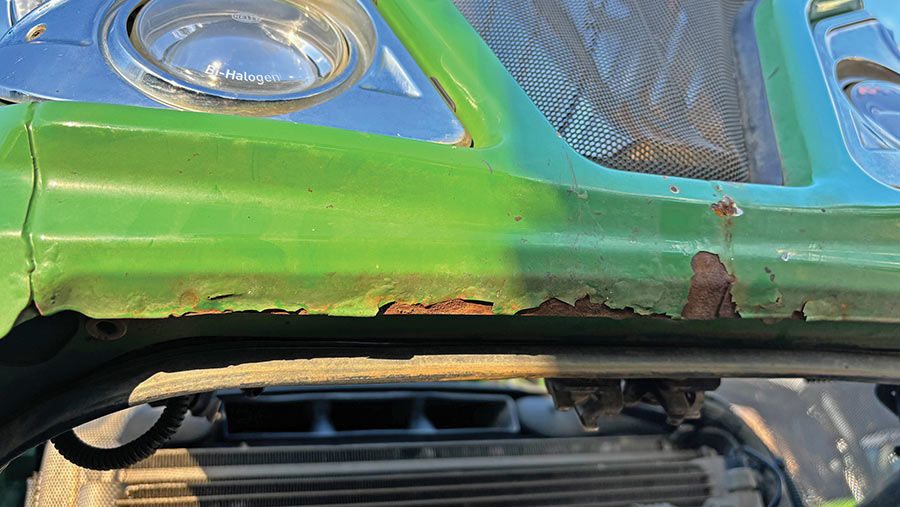
© James Andrews
Most of those tractors finished in Fendt’s “nature green” paint, which came in around 2016, suffer from unsightly rusting on the bonnet and steps.
The problem seems to be a combination of poor surface preparation and the water-based formula of the paint, which Fendt is still trying to address.
This leaves customers having to put up with a tatty looking tractor or go to the trouble of having these areas repainted properly.
Dealers also have to spend considerable amounts of time and expense tidying up trade-ins before they can sell them on.
Pto and four-wheel drive solenoids – 500, 700 and 800 series made after 2014
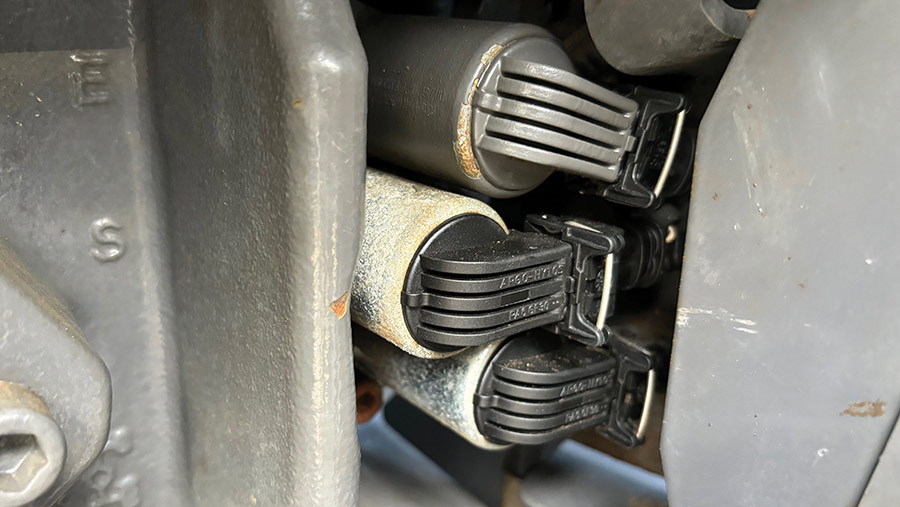
© James Andrews
Solenoids that control the pto and four-wheel drive system are located either side of the pto and the seals can fail, making them susceptible to water damage.
They’re particularly problematic for those who get over-zealous with the pressure washer when blasting crud off the back of the tractor.
This wasn’t a problem on pre-2014 tractors as they had a different type of solenoid that was far better sealed.
When they do pack up, drivers will be shown an error code on the screen and they might find the tractor gets stuck in four-wheel drive or won’t select the pto speed they want.
Savvy operators can often get themselves going by swapping the solenoids around – changing the 540 pto speed for the four-wheel-drive one, for example – but the long-term fix is to fit a replacement. These cost about £170 each.
On 900 series tractors the solenoids are positioned under the cab so they have a much lower risk of water ingress.
Bonnet struts and catches – 700 series
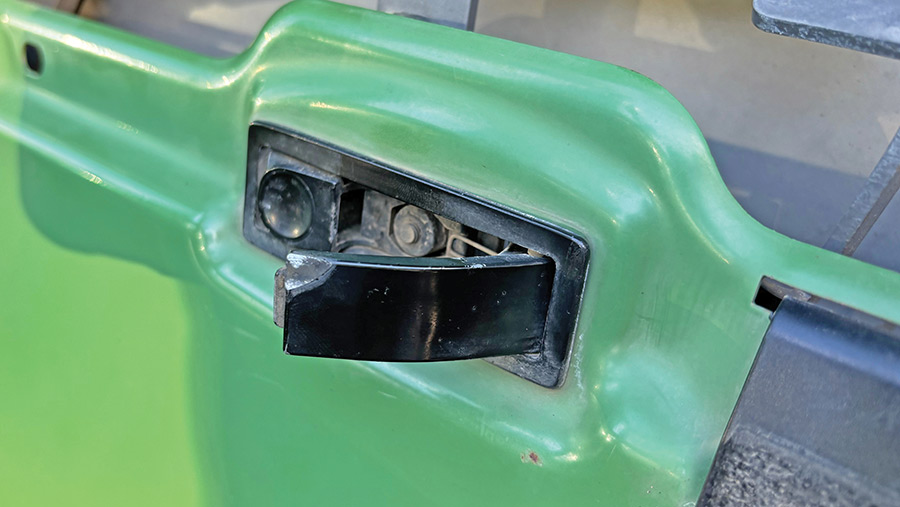
© James Andrews
The design of the bonnet on 700 series tractors isn’t the best, particularly the catches on the side panels which get worn and flick out as the main hood is lifted.
If the top piece is then lowered onto them, it bends the catches and puts a crease in the metalwork.
The only solution is to replace the clips when worn – there’s one on each side and they cost about £50.
It’s also wise to replace the bonnet gas struts when they lose their strength, to avoid having to prop it up and remove the risk of it crashing down on someone’s head.
Front pto rubber coupling – 700 and 800 series
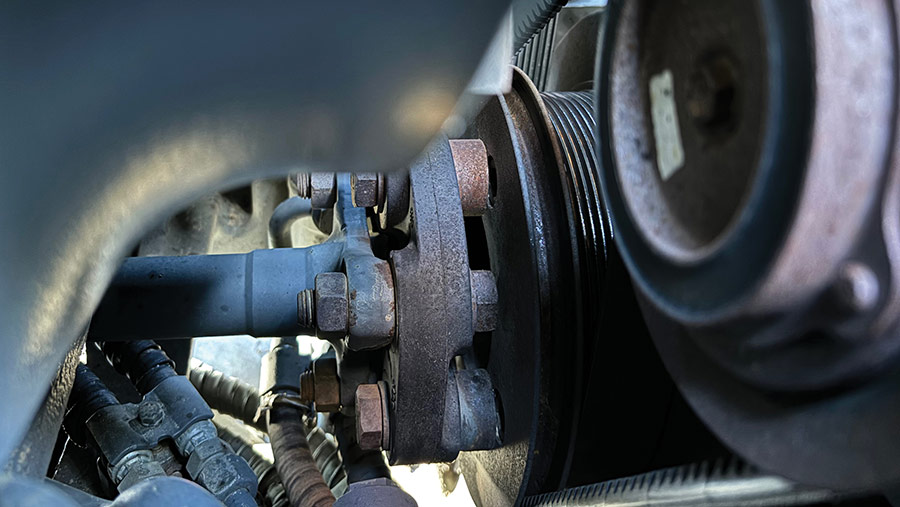
© James Andrews
On a tractor where the front pto gets regular use, it’s wise to check the condition of the rubber “doughnut” coupling every couple of thousand hours.
If there are any tears or it looks perished, a new one should be fitted to avoid the risk of it letting go when under load. They cost about £200.

